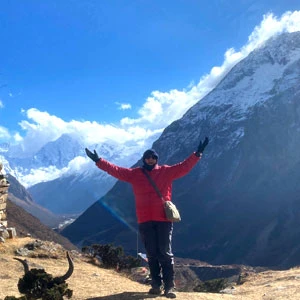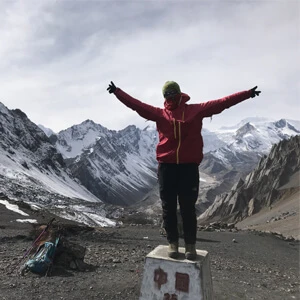These FAQs are designed to provide a basic overview of traveling and trekking in Nepal. You may have other queries, so feel free to contact our staff and fire away—they're ready and waiting to help.
Where is Nepal?
Nepal is located in southern Asia, sandwiched between India and China.
Why should I visit Nepal?
Nepal is a landlocked nation of supreme natural beauty and immense cultural diversity. Home to the majestic Himalayas and eight of the world's highest mountains, it's considered the premier destination for trekking enthusiasts, who journey to the country each year to test themselves on the dozens of stunning routes winding through the mighty mountain range. Everest, of course, is one of the major attractions, as befits the tallest and most legendary peak in the world, while treks such as the Annapurna Circuit are viewed as the finest available due to the perfect combination of towering mountains, superb views, and fascinating cultural perspectives. Nepal, on the other hand, has far more to offer, including climbing, river rafting, kayaking, jungle safaris, paragliding, bungee jumping, pilgrimage tours, and UNESCO World Heritage sites, as well as a people who welcome visitors to the country as if they were guests being invited into their own homes.
Can I get a Nepal visa on arrival?
Yes, the visa for Nepal is readily available on arrival. You may go through the Nepal Immigration Official website for more details.
What is the currency of Nepal, and how does it work?
The currency of Nepal is the rupee. The ideal currencies for exchange are those of the USD, GBP, Swiss Franc, Canadian Dollar, SGD, and AUD, as well as the Euro, any of which can be readily exchanged in either Kathmandu or Pokhara.
Do you provide airport pickup?
Yes, we provide complimentary pick-up if necessary, which you can confirm during the booking process. Just to clarify our agency's representative will be right in front of the arrival gate holding our agency name board Nepal Trekking Experts. So you will easily recognize us.
Are ATMs available in Nepal?
ATMs are very common in Kathmandu and Pokhara. Once in the mountains, though, the situation becomes different, so cash is highly recommended in such situations. Credit and debit cards such as Visa, MasterCard, and American Express are easily accepted in major cities and tourist markets.
Can I pay by credit card in Nepal?
Yes, you can pay by credit card only in major cities and tourist markets. The typical surcharge is 3.5% of the total amount, which depends on the store.
Can I store unnecessary gear in Kathmandu during a trek?
Yes, you may store items on our premises or ask for a similar service from your hotel.
What kind of equipment do I need for trekking?
Depending on the time of year and the trek itself, a wide variety of gear may be necessary. You may take a look through our detailed blog, Trekking Gear Checklist, and discuss it with our team.
Can I buy or rent trekking gear in Kathmandu?
Yes, you can find all sorts of trekking gear in Nepal, typically around the Thamel area of Kathmandu, where it's possible to buy or rent everything you might need. We can give appropriate advice on request.
Who will be my guide?
You will have an English-speaking local guide who's professionally accredited, fully trained in first aid, and highly experienced; we don't stint on the quality of such key personnel. We also offer language-specific guides on request for common languages such as French, German, Japanese, Spanish, and Italian.
Do I need a porter?
Under normal circumstances, porters carry approximately 20 kilos, and we typically assign one for every two people in a trekking party. Porters can make all the difference to the enjoyment and success of a trek, not least by freeing you up from the need to carry excessive weight at altitude when your body will be straining for every ounce of oxygen it needs. As well as helping to ease your burden, it also contributes enormously to the local economy by employing locals. With a porter, all you'll need to take with you is a small daypack to carry necessities such as snacks, a sweater, rain gear, and so on.
Do I need to bring a backpack for the porter?
If you have backpacks or duffel bags, bring them; otherwise, we provide complimentary duffel bags.
How long do we walk per day during a trek?
On a typical day, clients can expect to walk somewhere between 12 to 16 kilometers (6 to 7 hours per day), though once we're above 3,000 meters, the distances might be shorter in order to stay within safety limits regarding daily altitude gains.



